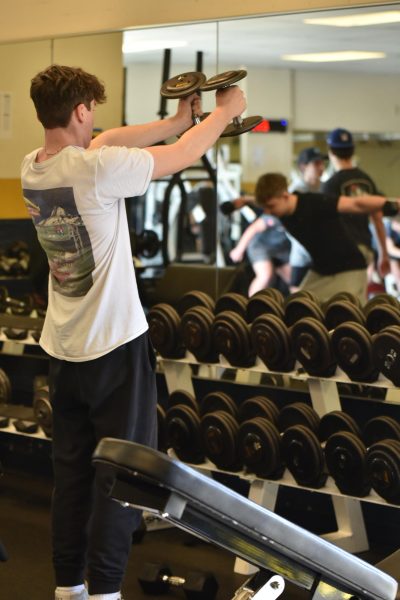Hi-Steppers experience stress due to time commitment
Dancers face pressure due to practice hours and need to perform
During a break in her dance class at Legacy Ballet on February 19, sophomore Bethany Barnett practices a turn combination, which she last practiced with her team. As soon as she finishes the last turn, she lets out a laugh and drops her poised stance. Although smiling and happy, her eyes tell a different story. Her feet are bruised and she is tired.
A dancer for both Legacy Ballet and the Hi-Steppers dance team, Barnett has competed in two different competitions in the last two weeks. Of the 26 Hi-Steppers on the 2017-18 varsity team, four have left the spot they earned on the team. The picture-perfect smiles and pointed toes will not give away how much more there is to this story. After completing what dancers described as a “nerve-racking tryout process,” what has made so many of them quit? Former Hi-Stepper senior Rachel Bliege shared her experience.
“After the first week of practice, I knew dance team wasn’t for me. I started dancing on Hi-Steppers my sophomore year, and I quit around November,” Bliege said. “I was so excited [to make varsity], but I don’t think I understood how stressful dance team was going to be.”
Bliege continues to pursue her passion for dance at Legacy Ballet, an Albany studio separate from the high school.
“It was not a great experience for me, but I know a lot of people who do enjoy it! It was just very stressful and sometimes degrading,” Bliege said. “I got very depressed during this time, and I knew I had to quit for my personal health.”
Why is dance so stressful? Are dancers under more scrutiny than other athletes? The Hi-Steppers have to fundraise for the team, come to practices at 6:30 a.m., and juggle homework, too. Current freshman Hi-Stepper Brianna Hickman doesn’t think twice when saying the hours are stressful.
“You have to come to every practice and your whole team is relying on you. Girls who don’t show up usually end up falling behind or getting pulled out of dances.”
In addition to dance team practices, she goes to Legacy Ballet and stays at the studio until 9:30 p.m. almost every day of the week.
“It’s hard to get other things done when you have so much practice time,” Hickman said. “[I do homework] during study skills, or else I’ll have to stay up late at night to finish it, rush to do it before practice in the morning, or in between practice at breaks.”
Still, she and her teammates aren’t the only ones affected. Hi-Stepper coach Lisa Bacus estimates that she spends at least 150 days during the year with her dance team.
“If a practice is two hours long, there has been usually equal or more time I’ve spent on my own to prepare for that practice,” Bacus explained. “Dance team is a part of my entire life.”
Nonetheless, the Hi-Steppers and their coach are hesitant to label dance team as the most demanding. Bacus describes the time commitment as unique, but holds the belief that no high school sport is the hardest of them all.
Dancers’ extensive time commitment can make it hard for them to access resources like counseling. For fellow dancers, Bliege suggests a mindset where you dance for yourself instead of others.
“If you try to compete with someone else or try to impress someone, it will become stressful and that’s why I feel like people may not enjoy it as much,” Bliege said, “But if you stop and refocus on things that matter and just dance for yourself, every single stressful situation disappears.”
State competition is next weekend at the Veterans Memorial Coliseum in Portland. Our team performs on March 16. Tickets are $13, and round one starts at 5 p.m.
Your donation will support the student journalists of West Albany High School. Your contribution will allow us to purchase equipment and cover our annual website hosting costs.











